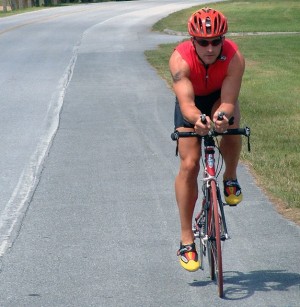 So you’ve really started to get into this whole cycling thing and you have decided it’s time to tackle something a bit more challenging than the short rides you have had so far. Now, it’s time to go long distance!
So you’ve really started to get into this whole cycling thing and you have decided it’s time to tackle something a bit more challenging than the short rides you have had so far. Now, it’s time to go long distance!
Don’t jump on your bike and go just yet though, as long distance riding requires a little bit of preparation before to ensure you stay comfortable and avoid injury. Check out these common mistakes that cyclists make on longer rides to make sure you enjoy yourself.
Not Enough Water
Hydration is key if you want to have enough energy to go the distance, you should make sure that you are stocked up with a few drinks so that you never find yourself in a situation where you’re reaching for a bottle and coming up with nothing but air. Aim to be drinking approximately one bottle every hour, with a couple of bites of food every 15-20 minutes to keep yourself at a constant level.
Three Minute Drills
If you’re aiming to improve your overall endurance during the race, try doing three minute drills a couple of times every hour. This is when you ride as hard and fast as you can for three minutes before recovering over the next fifteen by riding normally. Repeat this one or two times every hour and you will build up strength in your legs in no time.
Overpowering Hills
Conservation of energy is key for a long bike ride, but when it comes time to go uphill you are going to be spending a little more energy. Try to keep to a steady rhythm and don’t go outside of your own comfort zone while going uphill. Just make sure you maintain your pace and don’t try to go as fast as possible to get it out of the way.
The Wrong Clothing
Cycling clothing isn’t essential for short rides, but the longer you stay on the bike, the more you are going to need it. Make sure that you have a good pair of gloves so that your hands stay protected, and that you are wearing clothes made of breathable fabrics that offer you a good fit and enough flexibility to do what you need to do.
The Wrong Bike
Your bike is just as important as the preparations you are making, so you need to ensure that it is a good fit for you. Too much time spent in a poor posture as a result of a badly fitted bike can cause all sorts of aches and pains. It can even lead to you getting injured if you’re really unlucky.
No Emergency Kit
Bike punctures happen and there are few things worse than being miles from home only to have a tire blow out on you. Make sure you pack a puncture repair kit, pump and any other essentials, especially if you are going over any difficult terrain. Hopefully you won’t need it, but you will be glad it’s there if you do.
Not Training
Physical fitness is very important if you are going to cycle over large distances, so you need to make sure that you are up to the task beforehand. Build up your rides beforehand and try to simulate what you will be doing as closely as possible and try to keep your cardio at a reasonable level.
Not Working Out
It can be tempting to think that your riding is all that you need to stay healthy, but if you really want to excel over long distances you need to get off the bike every so often and build up your strength. Pilates will help you to improve you core, which will in turn improve your posture and lead to fewer injuries and muscle aches. Mix that in with some yoga, strength and general cardio training and you should see improvements.
Poor Planning
No long ride should be started without a clear end and beginning point, with a set route between the two, planned well in advance. This will ensure that you don’t waste any time or energy getting yourself lost. If you’re a little concerned about the distance you will be covering, try breaking your route down into sections to make them a little less intimidating.
The Wrong Gear
Understanding your gears is extremely important, using the wrong one can lead to you overexerting yourself. On flats you want to be going at about 95rpm, so if you’re finding that too much of a struggle, you’re in too high a gear and will eventually wear out. Conversely, if the gear is too low then your legs are having to do too much work to keep to the correct speed.
 Long bikes rides are a wonderful way to enjoy your time to yourself or others and get in some much needed fun. However, if you do plan on spending hours or even days on your favorite bike route, there are some things that you will want to take with you. This simple checklist will help you take on any challenge or emergency you may meet on the bike trail.
Long bikes rides are a wonderful way to enjoy your time to yourself or others and get in some much needed fun. However, if you do plan on spending hours or even days on your favorite bike route, there are some things that you will want to take with you. This simple checklist will help you take on any challenge or emergency you may meet on the bike trail.